Curious about what’s happened since the moment in time of the cases? Watch our webinars with leaders from each organization and the co-authors of the cases as we discuss in more detail.
Watch webinar recordings:
TNTP: Facing Difficult Conversations
College Track: Moving Beyond Diversity to Inclusion
Blue Engine: The Challenge of Living Out Values
You’ve probably seen those case studies — the ones that all too often gloss over thorny, multidimensional challenges and deeply human imperfections for the sake of a neat narrative or sales pitch.
These are not the case studies you’re used to.
Since the release of Unrealized Impact — Promise54’s first-of-its-kind, rigorous effort to quantify the state of diversity, equity, and inclusion (DEI) in the field — we’ve received many requests for narratives sharing organizations’ actual DEI journeys. In response, we’ve decided to write a series of in-depth case studies that reflect the messy reality of the work to create thriving environments for adults so they can do their best work on behalf of students, families, and communities.
We’ve endeavored to create a radically human alternative to the run-of-the-mill case study. Based on hours of interviews and analyses of artifacts, staff experience survey data, and DEI plans, we strove to honestly represent the journey of each organization featured — including progress made, comparisons to sector benchmarks, missteps along the way, and the challenges that these organizations are still grappling with today.
We also recognize that the stories we share are not fully representative of the wide range of perspectives and experiences that exist within these organizations. Bias is inherent in any research endeavor, and we acknowledge that there are likely biases into ours as well as the perspectives of the “storytellers” in each organization.
This honest and radically human representation requires an immense amount of vulnerability and bravery from the participating organizations, their staff, and leadership. They have invited us into not only their moments of success but also their messiest, most difficult moments - and we are profoundly appreciative for that.
The organizations you’ll read about here are not groups who have “arrived,” and we’re not holding them up as models of perfection for others to emulate - either in process or outcomes. We believe perfection is an impossibility — and the focus on it is often a manifestation of white-dominant culture in our organizations. Instead, we embrace the imperfect work of these featured organizations as an opportunity to learn, surface discussion questions and considerations, to ultimately help drive forward progress on DEI in our own organizations and in the field collectively.
What’s more, DEI work simply can’t be automated. There’s no universal checklist to follow — not even in these case studies — and no one-size-fits-all formula for how to get to diverse, equitable, and inclusive. Each organization’s path is highly specific to its own culture, beliefs, and challenges. DEI work within organizations is a winding process that requires maintenance, patience, and tailoring.
That’s why we’re shining a spotlight on organizations of different sizes, types, and geographies, and at different points in their journey. The first three featured organizations in this series model courage, candor, and vulnerability by baring their often uncomfortable truths. And therein lies the essence of the work itself.
How do we measure, compare, and classify organizations on diversity, inclusion, and equity?
Throughout the case studies, you will see references to Promise54’s DEI surveys, our aggregate field-level DEI data, and our “Unrealized Impact” report. Here’s a bit more information on how we use those tools to help organizations measure, benchmark, and classify DEI efforts.
In spite of a desire to drive progress related to diversity, inclusion, and equity, we see many organizational leaders struggle to measure and monitor their efforts over time. In our Promise54 DEI surveys and associated reports, we offer a solution: Diversity, Inclusion, and Equity Indices. These indices offer an aggregate look across a battery of questions on staff perspectives for each distinct DEI concept. Many organizations find the Diversity Index, Equity Index, and Inclusion Index to be powerful metrics to watch as they seek to monitor the effectiveness of their DEI work over time while using our more detailed reporting on each index to inform their plans for the future.
While each organization’s DEI journey is distinct, leaders and staff alike can find it informative to understand how their organization’s current state compares to those of their peers. Therefore, we continue to collect and report on aggregate field-level DEI data over time. Our repository of DEI data is always growing, but at the time of these case studies, our benchmarks include over 20,000 respondents across over 400 organizations, largely in the field of education. Our benchmarks span all 50 states of the U.S. and the District of Columbia, include organization sizes from no full-time staff to several thousand, and represent various types of education organizations.
See some of our most updated national data here!
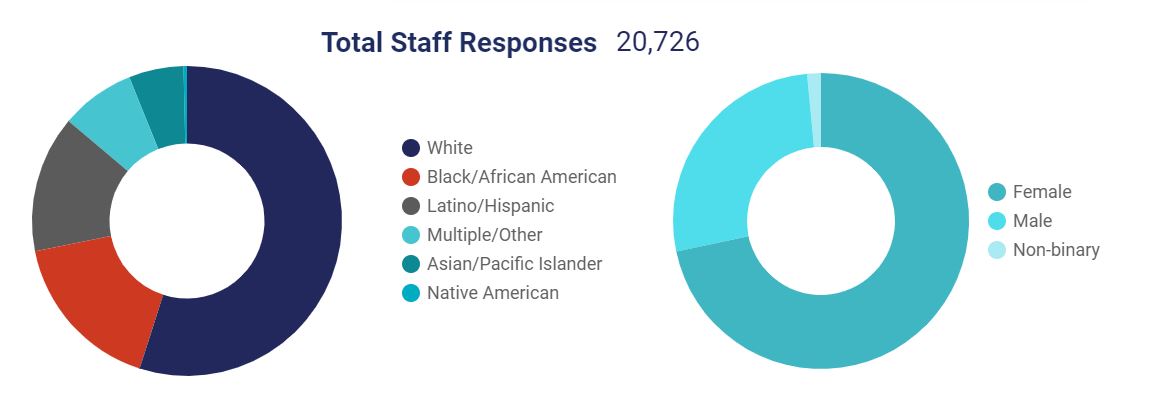
As we looked across all three dimensions of diversity, inclusion, and equity for organizations that have participated in the Promise54 Staff Experience DEI Survey, we noted substantial similarities among clusters of organizations (as illustrated in the scatterplot below):
Based on these common characteristics, we created Organizational Profiles to describe organizations in a similar place in relation to DEI. Leaders often find Organizational Profiles useful to contextualize their experiences and to get a sense, across all three dimensions, of their organization’s past, present, and future state.
In brief, the Organizational Profiles based on Promise54 DEI Staff Experience Survey data are:

Early Stage organizations typically have relatively:
Our data indicates that this pattern could be driven by a couple of conditions (or a combination of them): 1) good intentions coupled with low or inconsistent prioritization of DEI efforts, 2) a need for a clear articulation of the link between DEI and the organization’s mission, and 3) an understanding of which DEI-related strategies will prove to be high leverage within the organizational context.
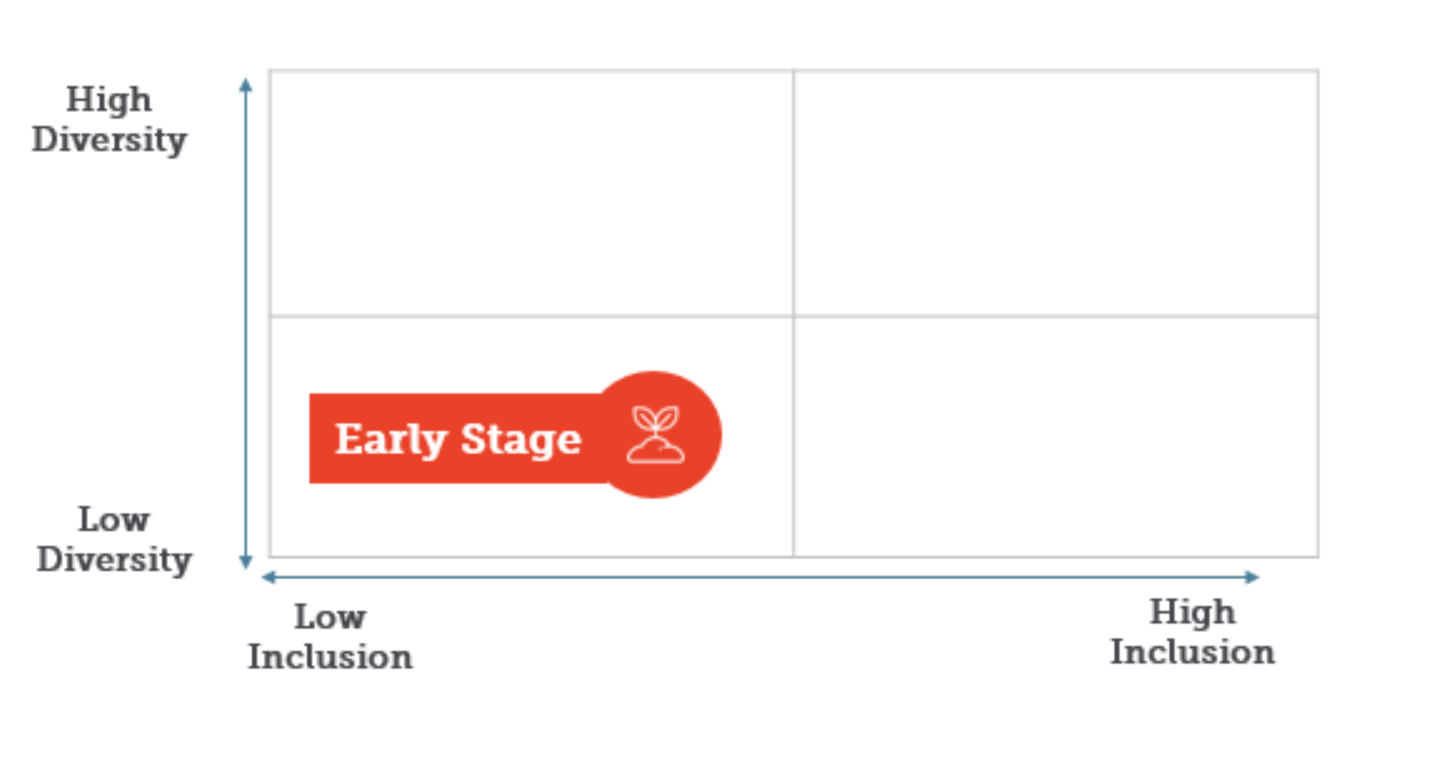

Diversified organizations typically have relatively:
Our data indicates that this pattern could be driven by an expectation that staff and leaders of color will assimilate to preexisting culture, practices, and systems versus an organization identifying and making the necessary changes to effectively receive and support a more diverse staff so they can thrive. Alternatively, some Diversified organizations may expect, whether implicitly or explicitly, that inclusion and equity will automatically follow from diversity. The underlying assumption is that staff who “represent” the communities served will drive forward this progress, and thus they are seen as responsible for the work rather than sharing the responsibility and the burden of the work across an organization.
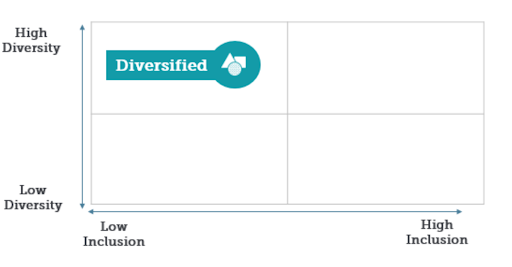
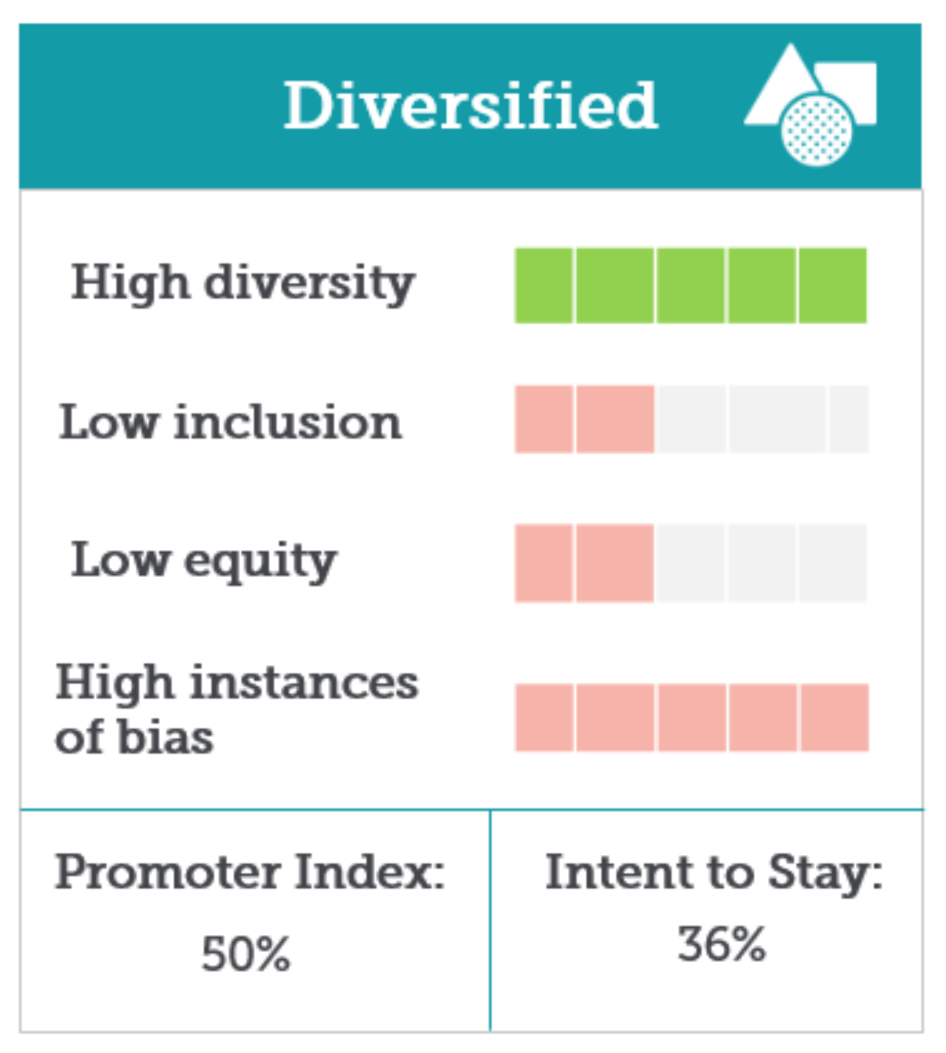
Kindred organizations typically have relatively:
While inclusive and equitable, these organizations are not diverse and may be experienced as inclusive or equitable because they’re homogeneous. Additionally, our data indicates that these organizations may not be generating the myriad benefits that studies demonstrate result from diversity.
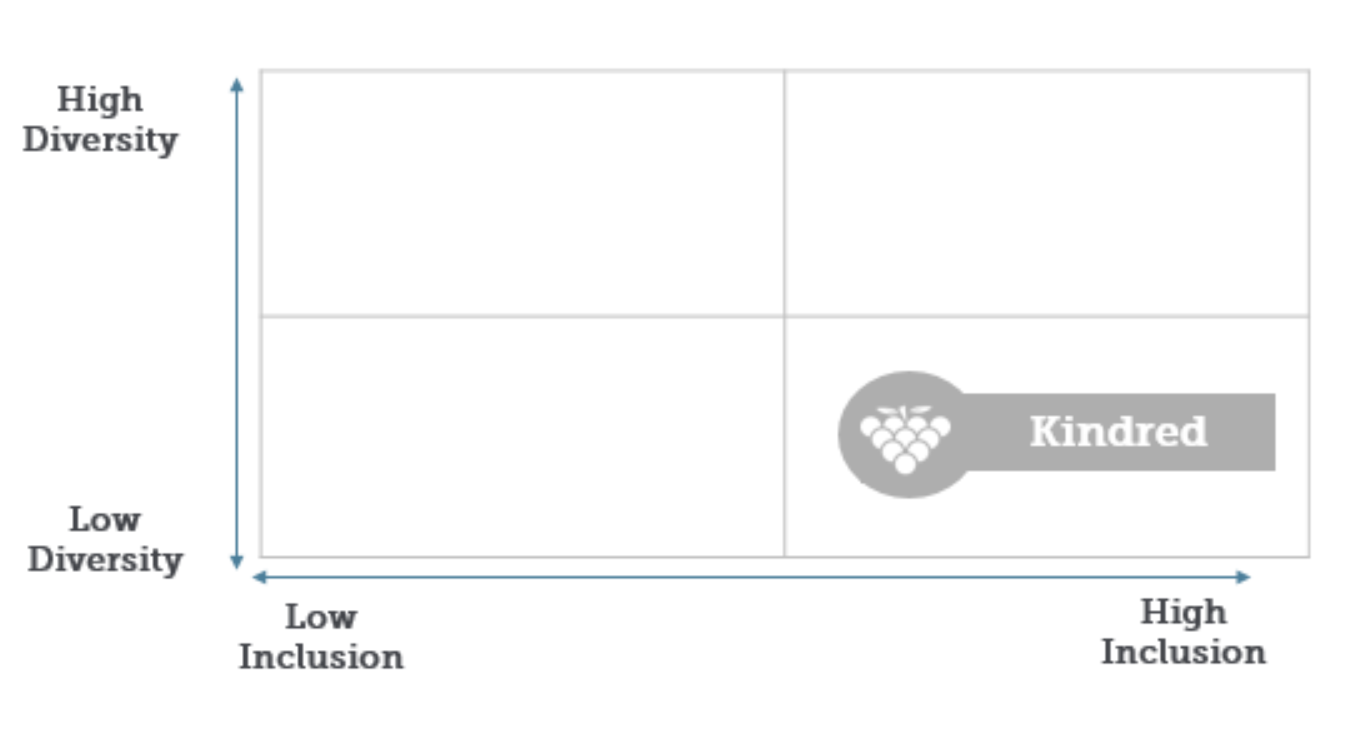
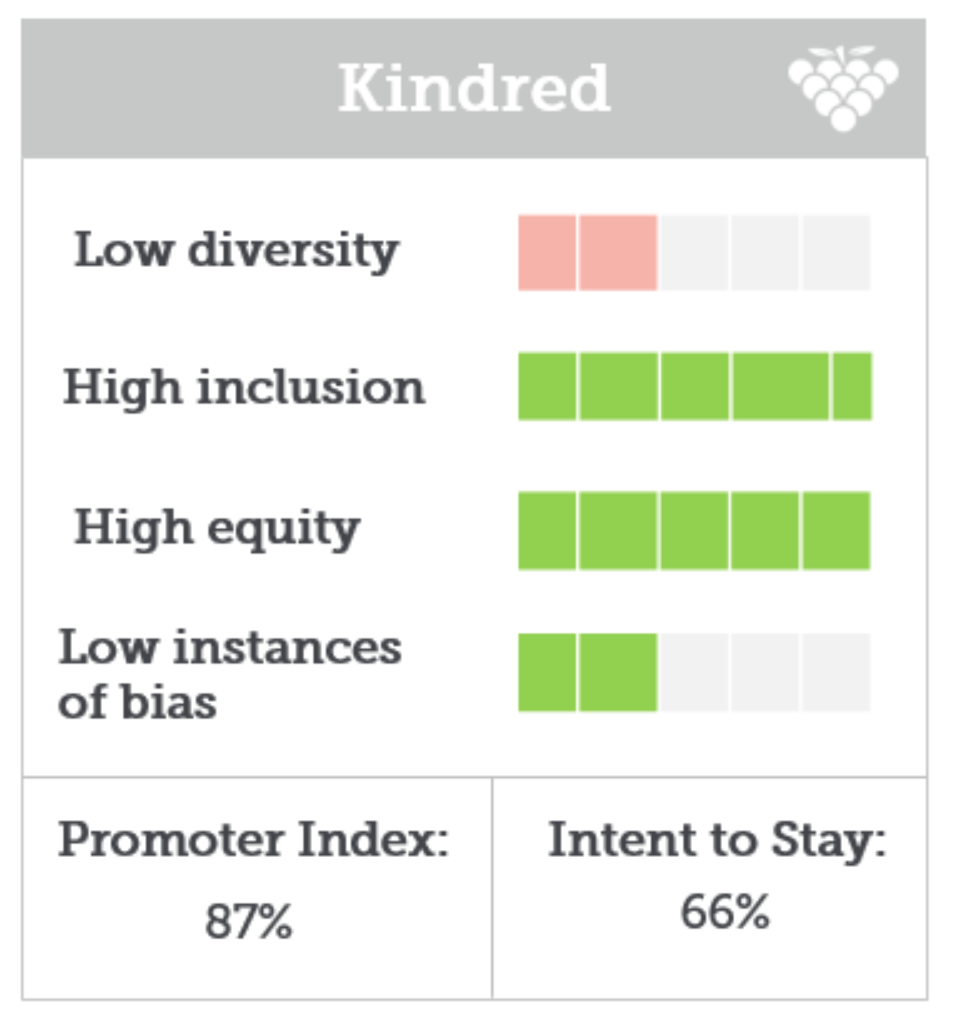
Advanced organizations typically have relatively:
Our data indicates that many Advanced organizations have organically integrated DEI into their fabric without articulating, documenting, or codifying their approaches, beliefs, or practices. This can expose these organizations to risks of not being able to sustain their strong DEI in periods of uncertainty or during substantial organizational inflection points.

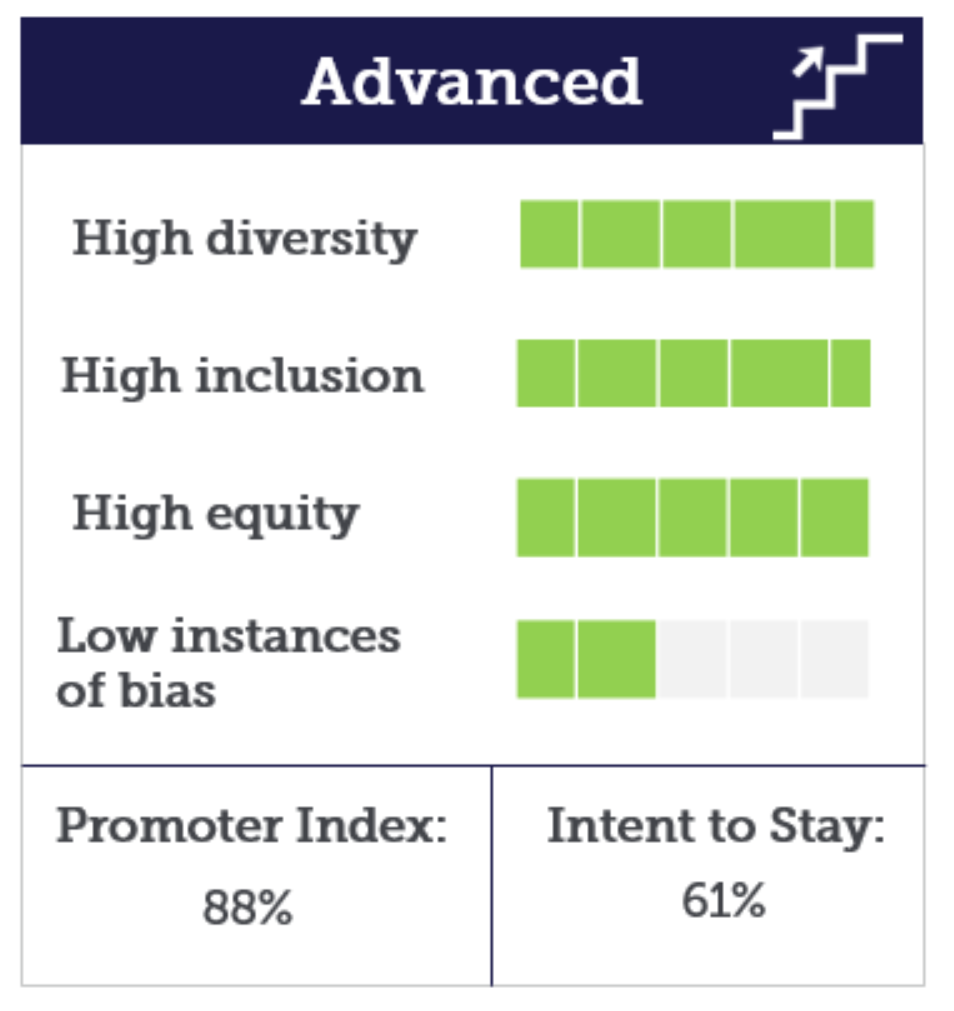
When we support organizations to work on their priorities around diversity, inclusion, and equity, we encourage an intentional, inclusive process to define these critical terms in context. This is especially important because while ~50% of education organizations believe DEI is related to their vision, mission, and/or values, less than ~20% have defined the terms for their own organizational context. This can lead to substantially different ideas of what an organization is working toward, how to best get there, or what individuals can expect from their day-to-day experiences. For a set of common starting definitions applicable across each of our case study organizations, we use the following:
Variation; the presence of different types of people (from a wide range of identities and with different perspectives, experiences, etc.).
When we partner with organizations to support their DEI work, some of the critical considerations we surface as they work to tailor their definition of diversity are:
Embracing diversity by creating an environment of involvement, respect, and connection — where the richness of ideas, backgrounds, and perspectives is harnessed to create value.
When we partner with organizations to support their DEI work, some of the critical considerations we surface as they tailor their definition of inclusion are:
Ensuring equally high outcomes for all and removing the predictability of success or failure that currently correlates with any identity marker.
When we partner with organizations to support their DEI work, some of the critical considerations we surface as they tailor their definition of equity are:
We created a promoter index comprised of a high score on intent to stay and/or willingness to recommend the organization to a friend.
This measure in our Staff Experience Survey looks at a staff member’s self-reported likelihood of working in the same organization in three years.
Culture refers to the norms, values, beliefs, ways of thinking, behaving, and decision-making within a group - or in this case within an organization. White-dominant culture norms (defined by Kenneth Jones and Dr. Tema Okun) “are damaging because they are used as norms and standards without being pro-actively named or chosen by the group. They are damaging because they promote white supremacy thinking. They are damaging to both people of color and to white people. Organizations that are people of color led or a majority people of color can also demonstrate many damaging characteristics of white supremacy culture.”
Kenneth Jones and Dr. Tema Okun defined white-dominant culture norms as listed below.

A concept coined by Amy Edmondson which refers to a shared belief held by members of a team that “the team is safe for interpersonal risk taking - a belief that one will not be punished or humiliated for speaking up with ideas, questions, concerns, or mistakes.”
In a team with high psychological safety, individuals feel safe taking risks around other team members and/or supervisors. Psychological safety facilitates continuous learning in organizations because it alleviates concern about how others will react to actions or behaviors that could have the potential for threat or embarrassment. Psychological safety is critical to DEI work because it supports and enables vulnerability, learning, growth, and behavior change.
Promise54 is deeply grateful to the leaders and staff of College Track, TNTP, and Blue Engine for their candor and their courage to vulnerably share their experiences working toward diversity, inclusion, and equity. In particular, we want to thank Elissa Salas, Julia Chih, Tonya Horton, Tequilla Brownie, Tamecca Chester, Leticia De La Vara, Anne Eidelman, and Elandria Jackson. Further we’d like to thank Lyle Hurst and Leslye Louie for data support, Heather Buchheim for writing, Amy Blizzard-Brown for research, Varona Productions for video production, Giant Rabbit for web build and support, and VBG Solutions for pdf design and build. Finally, we appreciate the thoughtful feedback and thought-partnership provided by Rebecca Crowe, Kaya Henderson, Chris Gibbons, Jonas Chartock, Frances Messano, and Idrissa Simmonds-Nastili.
We also want to thank the Bill & Melinda Gates Foundation, especially the contributions of program officers Katherine Martin and Rachel Leifer, and the Walton Family Foundation for supporting this critical work.
Promise54’s mission is to help adults thrive so they can better serve students, families, and communities. We envision a day when organizations committed to educational equity can have maximum impact because they have: